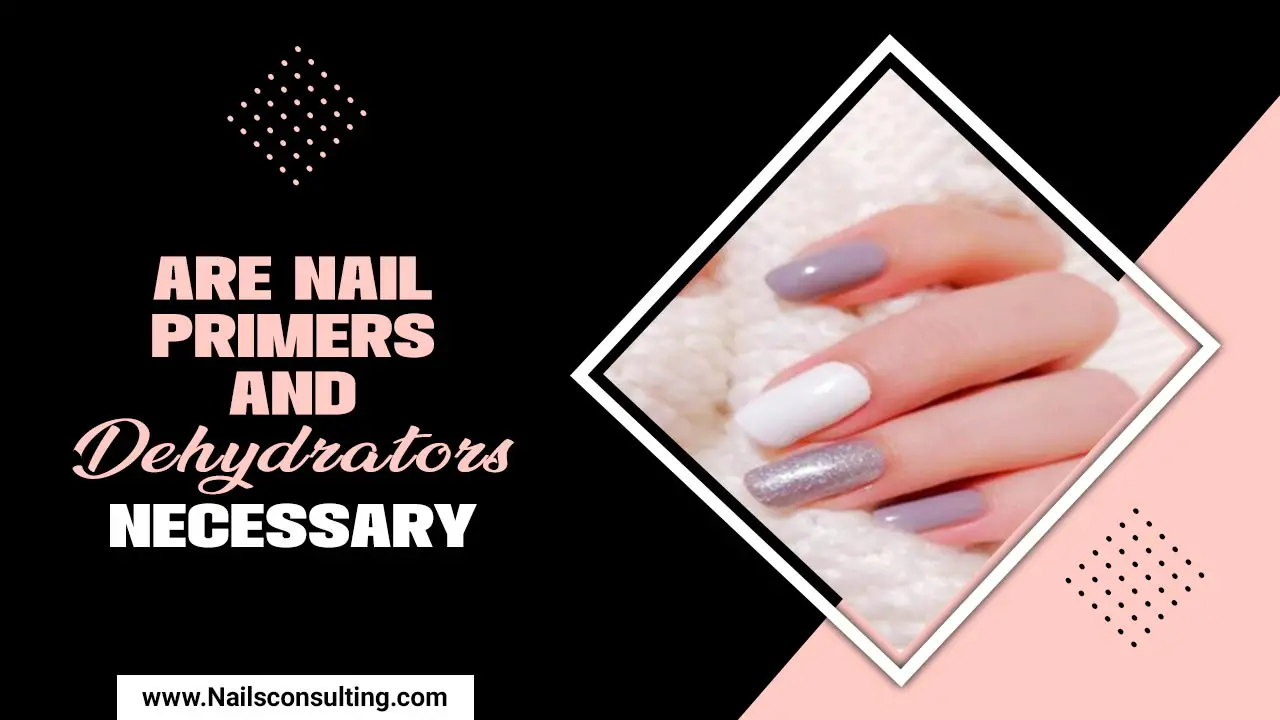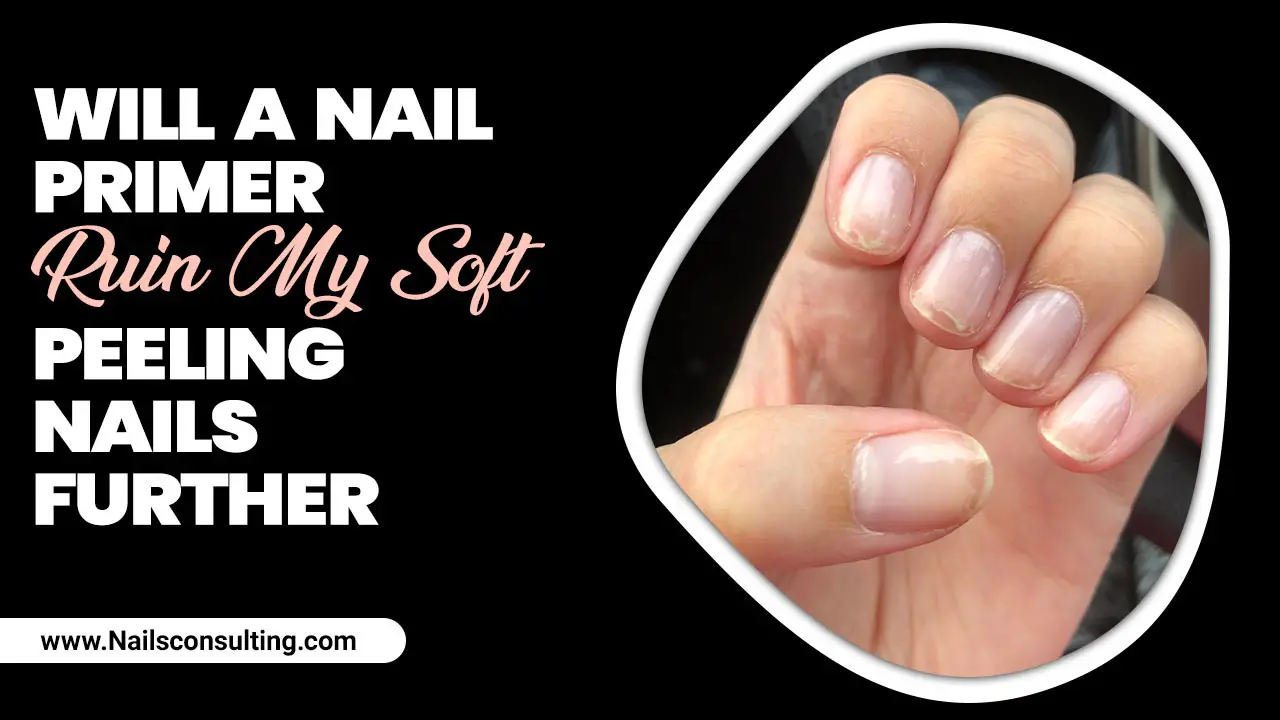Nail primer is a crucial part of any manicure routine, as it helps to extend the longevity of your nail polish and prevent chipping.
However, not all nail primers are created equal, and some may actually do more harm than good. As a professional in the beauty industry, it is important to understand the signs of a bad nail primer and how it can affect the health and appearance of your client’s nails.
Here, we will explore the key factors that determine whether a nail primer is bad and how do you know if nail primer is bad. From discussing the ingredients to examining the application process, we will provide you with the necessary knowledge to make informed decisions about the nail primers you use in your salon.
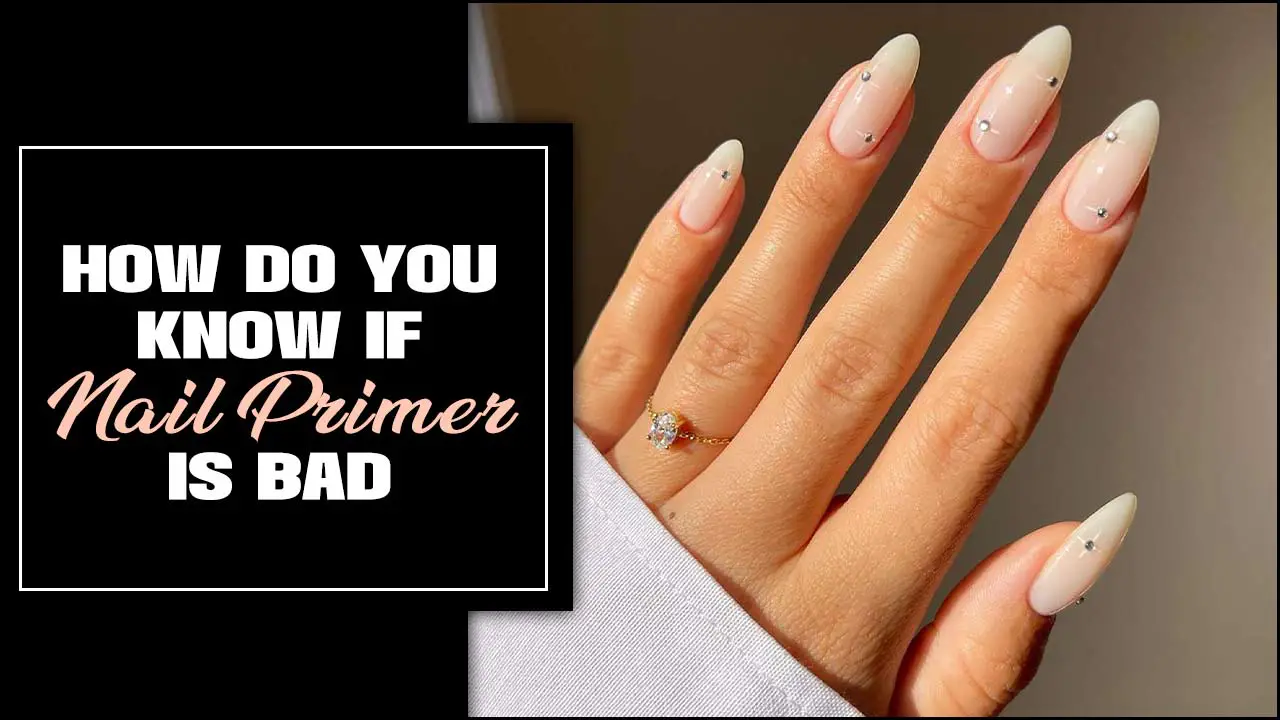
What Is Nail Primer?
Nail primer is a crucial component in the field of nail care and aesthetics. It is a substance that is applied to the natural nail before the application of nail polish or artificial nail enhancements. The primary purpose of a nail primer is to create a smooth and even surface on the nail, ensuring better adhesion of the subsequent layers of polish or enhancements.
In essence, nail primer acts as a preparatory agent, facilitating the bonding process between the natural nail and the nail product. It typically contains chemicals such as methacrylic acid or ethyl cyanoacrylate, which help in promoting adhesion by dehydrating the nail plate and enhancing its ability to bond with the polish or enhancements.
How Do You Know If Nail Primer Is Bad – Full Discussion
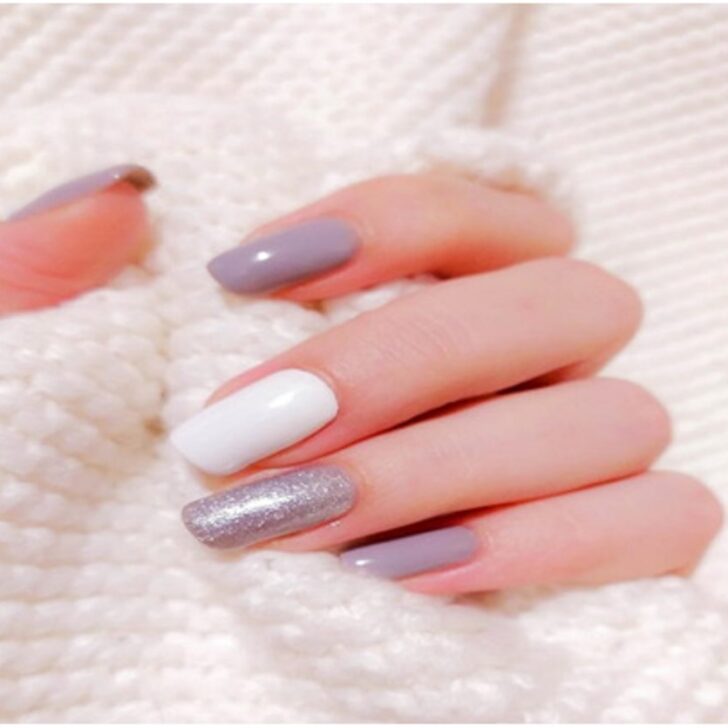
Here is are discussion on how do you know if nail primer is bad. The topic of nail primer and its potential adverse effects has garnered significant attention and debate within the beauty industry. Nail primer, a product handy as a base coat before applying nail polish, has been criticized for its potentially harmful effects on the health and appearance of nails.
Numerous studies and expert opinions have raised concerns about the negative consequences associated with the use of nail primer. To determine if nail primer is bad or expired, look out for the following signs:
- Change in consistency: If the primer has become thick or gooey or if it separates into layers, it may be a sign of deterioration.
- Unpleasant odour: If the primer has a strong, foul smell or if it emits any unusual odours, it could indicate that it is no longer suitable for use.
- Discoloration: If the primer has changed colour, such as turning yellow or brown, it may be a sign of degradation.
- Ineffective results: If the primer no longer helps the nail polish adhere properly or if it causes the polish to chip or peel easily, it could be a sign that the primer is no longer effective.
- Expiration date: Check the packaging or label of the primer for an expiration date. If it has passed, it is advisable to discard the product.
Remember, using expired or bad nail primer can result in poor nail polish application and potential damage to your nails. It is best to replace any questionable or expired nail primer with a fresh and reliable product.
Signs Of Bad Nail Primer
Nail primers play a crucial role in achieving a flawless and long-lasting manicure. However, not all nail primers are created equal, and it is essential to be aware of the signs of a bad nail primer. Signs of Bad Nail Primer:
- Uneven application: If the nail primer is not applied smoothly and evenly, it may indicate that it is of poor quality or has expired.
- Quick drying: A bad nail primer may dry too quickly, making it difficult to work with and leading to a less durable manicure.
- Weak adhesion: If your nail polish easily chips or peels off, it could be a sign that the nail primer did not provide a strong enough bond between the nail and polish.
- Yellowing or discoloration: Low-quality nail primers may cause your nails to be yellow or become discoloured over time.
- Shorter wear time: If your manicure doesn’t last as long as expected, it may be due to a subpar nail primer that fails to provide adequate protection and adhesion.
- Strong chemical odour: A strong and unpleasant chemical smell coming from the nail primer could indicate that it contains harmful ingredients or is expired.
- Allergic reactions: If you experience redness, itching, or irritation after using a nail primer, it may be a sign of an allergic reaction to the product.
Common Issues With Nail Primer
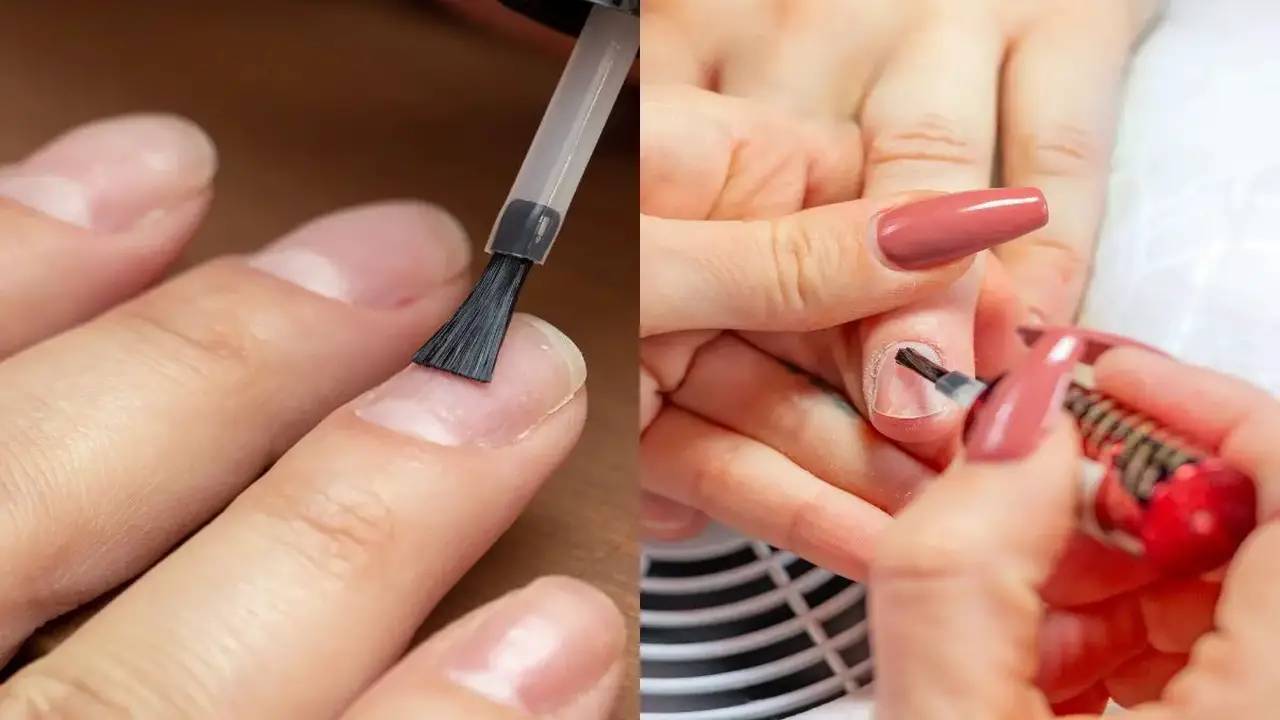
Nail primer serves as a crucial component in the process of applying nail polish, as it enhances adhesion and extends the longevity of the manicure. However, despite its importance, nail primer is not without its common issues. Common issues with nail primer include:
- Nail Damage: Some nail primers contain chemicals that can be harsh on the nails, leading to dryness, brittleness, or peeling of the nail plate. This can result in weakened and damaged nails over time.
- Allergic Reactions: Certain individuals may be allergic to the ingredients present in nail primers, such as methacrylic acid or formaldehyde. This can cause redness, itching, inflammation, or even blistering around the nail area.
- Inadequate Adhesion: Nail primers are designed to enhance the adhesion of nail products, such as polish or gel. However, if not applied correctly or if the primer is of poor quality, it may not provide enough grip, leading to premature chipping or lifting of the nail product.
- Nail Discoloration: Some primers, especially those with pigments or dyes, can cause discoloration of the nails over time. This can result in yellowing or staining of the nail bed, which may be difficult to remove.
- Difficulty in Removal: Certain nail primers can be stubborn to remove, especially if they contain strong adhesion properties. This can lead to excessive scraping or filing of the nail surface, which can weaken the nails or cause damage if done improperly.
How To Test Nail Primer For Quality
the application of nail products, ensuring quality is paramount. One crucial step in the nail preparation process is the use of a nail primer. Nail primers play a vital role in creating a strong bond between the natural nail and the subsequent layers of polish or artificial enhancements.
Therefore, testing the quality of a nail primer is of utmost importance in achieving optimal results. To test nail primer for quality, follow these steps:
- Look for clarity: Check the primer’s appearance and make sure it is clear and free from any cloudiness or sediment. A high-quality primer should have a transparent and smooth consistency.
- Smell test: Take a sniff of the primer and ensure it does not have any strong or offensive odours. A good-quality primer should have a mild or neutral scent.
- Drying time: Apply a small amount of the primer onto a test nail or nail tip and observe how quickly it dries. A high-quality primer should dry within a reasonable time frame, typically within 30 seconds to a minute.
- Adhesion: Apply the primer onto a clean nail surface and see how well it adheres. It should create a strong bond with the natural nail, providing a solid foundation for the nail enhancements.
- Longevity: Observe the longevity of the primer once the nail enhancements are applied. A good-quality primer will help the enhancements last longer without lifting or peeling.
- Compatibility: Test the primer with different nail enhancement systems or products to ensure compatibility. It should work well with various types of nail enhancements, such as gel, acrylic, or dip powder.
- Client feedback: Collect feedback from clients who have used the primer before. Their experiences and satisfaction can give you valuable insights into the quality and performance of the product.
Understanding Expiration Dates And Shelf Life

Nail primer is an essential product handy in the preparation of nails before applying nail polish or artificial enhancements. As with any beauty product, nail primers also have expiration dates and shelf life that should be considered for optimal use and safety. Here is some information to help you understand expiration dates and shelf life for nail primer:
- Expiration Dates: Nail primers typically have an expiration date printed on the packaging. This date indicates the recommended period within which the product is expected to maintain its quality and effectiveness. It is important to check this date before using the nail primer.
- Shelf Life: The shelf life of nail primer refers to the period during which the product remains usable after it has been opened. This can vary depending on the brand and formulation of the primer. Generally, experts recommend using the nail primer within 12 to 24 months after opening.
- Signs of Expired Nail Primer: Using an expired nail primer may not produce the desired results and can even pose risks to your nails. Signs of an expired nail primer may include changes in texture, colour, or smell. If you notice any of these signs, it is best to discard the product and replace it with a fresh one.
- Proper Storage: To maximize the shelf life of your nail primer, it is important to store it properly. Please keep it away from direct sunlight, extreme temperatures, and humidity.
Proper Storage And Handling Of Nail Primer
Proper storage and handling of nail primer is important to maintain its effectiveness and ensure its longevity. One way to determine if a nail primer is bad is to check its consistency. If the primer has thickened or become clumpy, it may be a sign that it has expired or been exposed to extreme temperatures. Additionally, a strong and unpleasant odour emanating from the primer could indicate its deterioration. Here are some key points to keep in mind:
- Storage: Store nail primer in a cool, dry place away from direct sunlight and heat sources. Extreme temperatures can affect the composition of the product and reduce its effectiveness. We recommend storing nail primer at room temperature.
- Seal well: Make sure the container or bottle of nail primer is tightly sealed after each use. This prevents evaporation and maintains the consistency of the product.
- Avoid contamination: To prevent contamination, always use clean and sanitized brushes or applicators when applying nail primer. This helps to prevent the introduction of bacteria, which can compromise the quality of the product.
- Keep away from children and pets: Nail primer contains chemicals that may be harmful if ingested. Therefore, store it out of reach of children and pets to ensure their safety.
- Use in a well-ventilated area: When applying nail primer, it is important to do so in a well-ventilated area. This helps to minimize the inhalation of fumes and ensures proper air circulation.
- Follow instructions: Always read and follow the manufacturer’s instructions on the label of the nail primer. This includes information on application techniques, recommended drying times, and any additional precautions.
DIY Nail Primer Alternatives

DIY Nail Primer Alternatives are alternative products that can be handy in place of traditional nail primers. These alternatives are often household items that can provide similar benefits to prepping the nails for polish application. Some popular DIY nail primer alternatives include:
- Vinegar: White vinegar can be used as a natural nail primer alternative. Soak a cotton ball in vinegar and swipe it across your nails before applying polish. Vinegar helps remove oils and residue from the nail surface, ensuring better adhesion of the nail polish.
- Lemon Juice: Lemon juice acts as a natural nail primer due to its acidic properties. Squeeze fresh lemon juice into a bowl and dip your nails into it for a few minutes. Rinse with water and dry before applying polish. Lemon juice helps remove stains and promotes better polish adherence.
- Base Coat or Clear Nail Polish: If you don’t have a traditional nail primer, applying a base coat or a clear nail polish can act as an alternative. These products create a smooth surface on the nails, allowing the polish to adhere better and last longer.
- Rubbing Alcohol: Rubbing alcohol can be used to cleanse the nails and remove any oils or residue. Soak a cotton ball in rubbing alcohol and wipe it across your nails before applying polish. This will ensure better adhesion and longevity of your manicure.
Conclusion
It is essential to regularly check the expiration date and condition of your nail primer to ensure the best results and safety. The signs of a bad nail primer may include changes in colour, consistency, and odour, which can be indicators of contamination or degradation of the product.
Additionally, paying attention to the storage and usage instructions can help prevent the deterioration of your nail primer. Using a nail primer that is past its expiration date or has been improperly stored can lead to detrimental effects on the nails, such as lifting, peeling, or weakening.
If the colour of the nail primer has changed significantly, it could be a sign of oxidation or contamination, rendering the product ineffective or potentially harmful. By following these guidelines, you can ensure the longevity and effectiveness of your nail primer and achieve the perfect manicure every time. We hope now you understand how do you know if nail primer is bad.
FAQs:
1.What Are Some Common Signs?
Ans: Common signs can vary depending on the context. Still, some examples include road signs that indicate directions or warnings, signs in stores or businesses that provide information or promotions, signs of physical illness such as fever or coughing, signs of emotional distress such as sadness or anxiety, and signs of a successful or unsuccessful outcome in a situation.
2.Can Nail Primer Go Bad?
Ans: Yes, nail primer can go bad. Over time, nail primer can become thick and clumpy, making it difficult to apply properly. Additionally, exposure to air and moisture can cause the primer to lose its effectiveness and may lead to the growth of bacteria or mold. It is important to check the expiration date on the primer and store it in a cool, dry place to prolong its shelf life.
3.Is Nail Primer Supposed To Be Sticky?
Ans: Yes, nail primer is supposed to be sticky. Nail primer is a product handy before applying nail polish or artificial nails to help improve adhesion and longevity. The sticky nature of the primer helps the nail polish or artificial nails adhere better to the natural nail surface, preventing chipping or peeling.
4.Is Nail Primer Sticky When Dry?
Ans: No, nail primer is not typically sticky when it’s dry. The purpose of a nail primer is to prepare the nail surface, creating a smooth and even base for nail polish or artificial enhancements. After applying and allowing the primer to dry, it should leave a tacky or slightly rough texture, which helps the nail polish or artificial enhancements adhere better.
5.When Should Nail Primer Touch The Skin?
Ans: Nail primer should not touch the skin. It should only be applied to the natural nail plate to promote adhesion and prevent the lifting of the nail polish or enhancements. Touching the skin with primer can cause irritation, redness, or allergic reactions. It is important to apply primer carefully and precisely, ensuring it only comes into contact with the nail surface.



